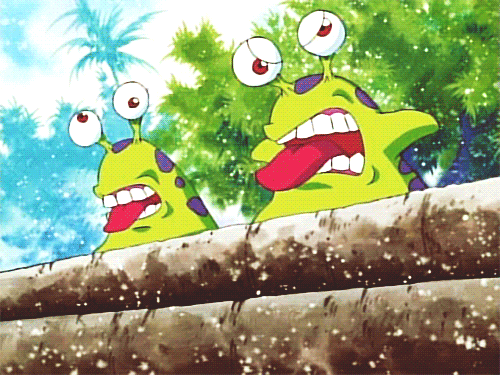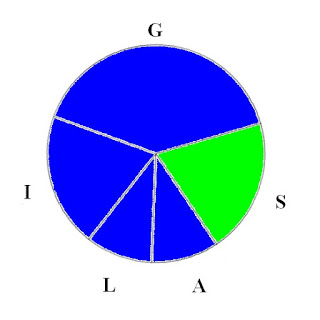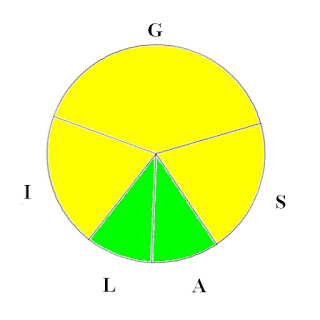Well it’s
been tough, trying to decide on what game I want to do for my first, official
review. Ultimately, though, my decision was based on another decision: I really
should review every game I play that was released this year. That way, assuming
I keep the blog going that long, I can do a fair Game of the Year assessment at
the year’s end. So, instead of deciding on something sentimental for me, or
some other such thing, I’ll just do a review of the first 2016 release that I
played this year; also the only 2016 release that I’ve played so far, unless
you count free phone games.
Digimon
Story: Cyber Sleuth was produced by Media.Vision, and published by one of my
favorite publishers, Bandai Namco. The first iteration was actually released in
Japan
last year, as a Playstation Vita exclusive. Early this year, however, saw the
international release, including a Playstation 4 version that, as far as I can
tell, has no plans to ever be released in Asian territories.
Digimon is
nostalgic as hell for me. When I was a kid, I had three main shows that would
get me out of bed early every Saturday. Funnily enough, I now know that all
three of them happen to be anime. They were: Yu-Gi-Oh!, Pokémon, and Digimon Adventures. While I did later go
on to incorporate Yu-Gi-Oh! cards and Pokémon games into my teenage and adult
years, Digimon was the franchise left behind, as it took me until I was well
into adulthood to own a Playstation 2, and the Nintendo DS games never caught
my attention. Cyber Sleuth, then, is in fact my first experience with Digimon
in video game form.
From what I
understand, Cyber Sleuth is only the second game in the “Digimon Story” series,
the first of which was never released internationally. Through videos and word
of mouth, though, I knew what the “Digimon World” games were, and purchased
Cyber Sleuth expecting something along the same lines. I thought that Digimon
would need food and cleaning. I thought that they would Digivolve
unpredictably, and after enough time had passed, would die. As it turns out, I
was quite wrong.

Gameplay
The game
follows standard JRPG conventions of old, a style that I remain eternally sad
that it seems to be dying. I love me some good old turn-based battles, with
none of Final Fantasy IV-IX’s disgusting timed turn system. I want a party put
in front of me, enemies on the other side, and my side’s possible actions laid
out before me with all the time I want to decide how to best deal with the
situation at hand. This is actually a big part of why I still consider myself a
huge fan of the Pokémon franchise, and why I proudly declare Final Fantasy X to
be my favorite in the franchise. Speaking of Final Fantasy X, that’s exactly
what the gameplay is.
Encounters
in the game are random; if you’re in an area where enemy Digimon could spawn,
then expect them to appear at any time. The game features a “turn order” bar in
the upper-right corner once you’re actually in battle, with the initial order
decided by everyone’s Speed stat, and certain moves able to move a Digimon higher,
or lower, on the list. You can do a basic attack, you can use stronger skills
that consume SP, or you can use one turn to switch out as many party members as
you’d like, with a maximum of three Digimon on either side of the field at one
time. It’s old school, to be sure. It’s a system that makes the game feel more
like something that should have been released in 2002, not 2016. Maybe this is
just my elderly bitterness kicking in, but I consider that a good thing; a VERY
good thing.
Obvious
comparisons to the monster collection are Pokémon and Shin Megami Tensei, but I
think it’s fair to say that Cyber Sleuth does its own thing very well. Unlike
both of those games, Digimon recruitment is not random, but based on how many
of said Digimon you’ve encountered. Find the same Digimon enough times in the
wild, and you can return to base and create one of your own at the computer.
The alternative is to Digivole your Digimon to the form you want. Unlike
Pokémon, you can also De-Digivolve your Digimon to lower-tiered stages, and
many evolutionary lines are tied together by common links. For example, I can
Digivolve my Punimon up to Tokomon and Nyaromon, then to Salamon, Gatomon,
Angewomon, and Ophanimon. Ophanimon is a healing, supportive, Light Digimon,
and learns the appropriate moves. However, if I’d like, I can then De-Digivolve
back down to Salamon, and choose to Digivolve it to Wizardmon instead, who I
can De-Digivolve down to the baby stage Kuramon, who can go up more Dark-based
lines, such as the Barbamon line, but it will retain all of its Light and
healing moves, despite now being a being of pure Darkness.
I know that
to non-Digimon fans, that last bit was just mumbo jumbo. The basic gist is,
though, that any Digimon can be taught any move, with the exceptions of
species-specific Signature Moves. Any Digimon can then, if planned ahead well
enough, be jargoned into any other Digimon that your heart desires. This,
alongside the inclusion of items that can change your Digimon’s personality and
additional training, means that you can never ruin a Digimon. In Pokémon, you
have to hatch one with perfect starting stats, train it perfectly, evolve it at
the right times to learn the right moves, and if you mess up at any point in
this, you throw it out and try again. I’ll proudly admit, I prefer this game’s
method. Also, as opposed to the Shin Megami Tensei games, you can actually tell
what Digimon your evolutions and fusions will create, removing the game’s
annoying amount of RNG. It may seem complicated, but the Digivolving system is
actually really simple, and once you’re earning enough experience points per
battle to start doing it at will, it becomes crazy addictive.
I love how the game handles stats.
HP affects your maximum health, SP lets you use more skills, ATK improves not
only the power of your physical attacks but also your basic attack that every
Digimon gets, DEF improves your defenses against physical attacks, and INT
affects both your magical attack power and your magical defense. It may seem
like Generation 1 Pokémon rules, but the big difference is the inclusion of the
basic attack, making it so that every Digimon really does benefit from every
stat; no stat is dead weight.
The international release of the
game features a Hard Mode, that wasn’t present in the original. While it seems
that all the mode did was add a stat multiplier to all enemy Digimon, it was
still an appreciated addition. I always enjoy the option to add more challenge
to my games, even if that challenge does feel a bit unbalanced at times. For
those who want their challenge in the form of PvP, there is an online mode,
though it is extremely bare bones. The only option is “Ranked Match,” which
begs the question: why did they bother naming it if it’s all you’ve got? Still,
the online is smooth, and in over 40 online battles, I’ve never had any
connection issues once I found an opponent. There is a weird bug, though, where
you’ll get barraged with connection issues for a couple of minutes between some
matches. It’s annoying, freely admitted.
Areas are a bit linear and
corridor-like, and while I’ve never minded areas like that, I will admit that
one or two open areas to explore would have been a nice touch. The game also
locks you out of backtracking to older zones for a good chunk of the game,
which had me a bit worried at first, but I’m happy to report that it opens up
later, meaning that it’s impossible to mess up on 100%ing the game. This is
especially nice, given that the main story alone can take over 80 hours to
complete. As a final gameplay note, the load times. They don’t exist. I’m not
joking when I say that this is among the smoothest running disc-based games I
have ever seen.
Immersion
Cyber Sleuth may have cheated a bit
in this category. It’s easy to lose yourself in the believability of the game’s
Tokyo , but a
large part of that probably has to do with the fact that every location is
modeled perfectly after its real world counterpart. The cyber world of EDEN
really gives off the vibe of playing an avatar in a functional digital world,
but you have to wonder how much of that is due to the fact that that’s
literally what you’re doing.
Where the game really shines in
this category is the Digimon itself, though. The inability to mess up your
Digimon stat-wise, plus the ability to change up your team by simply
De-Digivolving and Re-Digivolving the same ones, does a fantastic job of
keeping you invested in your party. The monsters you’re collecting don’t feel
disposable, but instead each one has its own story behind it. The fact that the
Digimon can even send you text messages (which, I’ll admit, was a bit weird at
first) also helps keep you invested in their lives. I found myself more
attached to a random Peckmon in one of my farms than I did to a few of my party
members, just because the little guy seemed to message me so frequently. His
was a face I was always happy to see after a long side quest.
The many different types of Digimon
available, plus the endless amount of ways you can train each one, keeps your
team feeling unique. I never feel more invested in a JRPG than when I can
customize my team to be however I want it to be. My experience playing through
the game, I guarantee, will be much different than yours was/will be/would be.
It’s for this reason that I find it weird that the game doesn’t let you
customize your main character at all, other than picking a gender and a name.
The game’s world does a fantastic
job drawing the player in. All of the EDEN
locations have enough in common to hold that edge of familiarity, yet keep
enough things different to add in that sense of adventure and exploration. It’s
when the digital and real worlds start colliding, though, that the setting
really takes off. These “Digital Shifts” can be downright haunting in how
dangerous, and how beautiful, they can look at the same time. They up the sense
of urgency well, and keep the player wanting to see the chaos through to the
end.
Story
As the name might suggest, Digimon
Story: Cyber Sleuth is heavy on the story. And the Digimon. And Cyber Sleuthing.
The basic premise is that you, a high school student who’s mother is
conveniently out of town, find yourself and a pair of your online friends,
Nokia and Arata, invited into the virtual world of EDEN , with promises of a gift with the power
to change the world. EDEN
is revealed to be a place where ones mind is uploaded into cyberspace, and is
frequently used not just for leisure and play, but has also taken over many
business practices as well, effectively turning it into a giant chat room
that’s taking over the world. Our three heroes meet with a man named Yuuko in
the hacker-run zone of Kowloon, who grants them the hacking program Digimon
Capture. “Digimon” is a blend of “Digital” and “Monster,” and are programs that
powerful hackers can use to more forcefully perform their illicit activities.
As with any good story though,
things aren’t what they seem. A pair of Digimon, named Agumon and Gabumon,
laugh at the very idea of being thought of as man-made programs, insisting that
even though they’re digital, that they’re just as alive as humans are, and hail
from a distant dimension that they call The Digital World. Shortly after this
revelation, the trio is attacked by a cybernetic tentacle monster, an Eater,
that threatens to consume their mental data. Nokia and Arata make it out just
fine, but you find yourself being grabbed by its slimy grip as you attempt to
log out. You wake up back in the real world, but find that your body is now
entirely composed of physical data, allowing you to jump into Eden and other
Cybernetic Rifts as you please. You’re picked up by a detective named Kyoko,
who recruits your unique talents to help her solve cyber-based crime, dubbing
you her Cyber Sleuth.
That’s just
an extremely condensed version of the main plot of Chapter 1. The game features
20 long chapters, most of which are filled with no small amount of side quests
with self-contained stories of their own. Even just trying to give basic
descriptions of each of the game’s main characters would take up more time than
I want to dedicate to this segment. The story is huge and exciting, and the
side quests can be anywhere from simple and silly, to depressing and
exceptionally dark. Not every story hits the right notes, though. Many quests
feel really forced and riddled with clichés, and too many characters feel
glossed over and one-note. On top of that, the translation has sporadic dips in
quality, sometimes leading to several minutes of dialogue that drag on and make
little sense. The end of the main story, especially, really seems to try hard
to explain everything that’s going on, but fails so beautifully in it that even
the characters listening to the story react with befuddlement. In general,
though, the writing does a great job of keeping the player engaged, and the characters
at the story’s forefront are likeable and often relatable. It may not stand out
as an exceptionally well-written game, but it is well above the standards for
video game writing, especially for a title with such a small budget.
Looks
Now we hit
the game’s biggest blemish, and to be fair, it’s not even that big of one. The
game opens with an incredibly charming portrayal of a VR chat room before
jumping into an anime-style cutscene, where the first issue becomes clear.
These cutscenes are few and far between, and despite individual frames looking
gorgeous, the framerate itself is choppy as all hell. In-game character models
are also very rough around the edges, and the characters themselves tend to be
designed a bit too same-y. Every woman’s clothing is so tight that her navel
can be seen through it, while every man gives off that tall, slender, and emo
vibe. Nokia’s outfit, especially, is just something of a train wreck. The art
style used for the characters, however, is really pleasant and appealing on the
eyes, so this never becomes too much of a problem.
Monster
designs, however, are great. That’s less this game’s doing, and more the doing
of the Digimon franchise as a whole, but the Digimon are all well rendered and
animated well. The non-Digimon enemies, the Eaters, get progressively more
horrific looking as the game goes on, doing an excellent job upping the ante
with design alone. There is, however, a bit of a contrast between the human
models and Digimon models, and the two don’t tend to blend together well. While
I can’t say that the game ever truly looks bad, the few things that do look
great are offset by others that simply don’t. I don’t blame the game for any of
this, though, given that it was originally designed for the Vita, I just can’t
recommend it to anyone who’s a graphics whore.

Audio
The game
retains its Japanese voice acting, with no English voice acting to be found.
While this sounds fine most of the time, there are moments where you can hear
the voice actors trying a bit too hard, and the moments that they decided not
to put voices to end up being a bit uncanny. Sound effects in battle don’t
feature much variance, but there’s nothing that ever gets grating. Outside of
battle, though, there is your phone. When a Digimon or human texts you, it
gives off a tell-tale chime that became a source of annoyance early on.
Immersive annoyance, but annoyance still.
If not for
the few flaws mentioned above, though, this game would be given a stellar score
for its audio. It’s the music, baby, that matters most, and the game’s
soundtrack is phenomenal. The Digital Shift theme, especially, I find getting
stuck in my head still, weeks after finishing the game. The balance of more
conventional music mixed with digital blips and burrs compliment the game’s
overall tone fantastically.
Conclusion:
As stated
before, Digimon Story: Cyber Sleuth feels more like an instant classic, high
quality, triple-A game from the early 2000s, than it does from its actual
position as a low-budget experiment from 2015. The base gameplay brings back
traditional JRPG mechanics in all the right way, even managing to best Pokémon
in a few ways as far as monster collecting goes, and besting Shin Megami Tensei
games in just about every way. Its setting will draw you in, and its mostly
well done stories will keep you there. Not for the person who requires beauty
at all times, but not repelling in that regard, and featuring some annoying
audio ticks that are offset by a killer soundtrack for the music lovers out
there. This is one of the most enjoyable games I have played in a while, and
probably the best original JRPG I’ve seen in over a decade.
Final Score:
8.75/10







